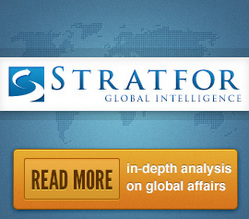Summary
Former Iranian President Ali Akbar Hashemi Rafsanjani, who ruled from 1989 to 1997, passed away on Jan. 8 at the age of 82. For the past four decades, Rafsanjani has been one of the most powerful figures in Iranian politics, surpassed only by Iran's first leader, Ayatollah Ruhollah Khomeini, and current Supreme Leader Ayatollah Ali Khamenei. His passing comes at a critical time in Iranian politics as the country prepares for an important presidential election in May.
With former reformist President Mohammed Khatami under a media ban and other notable reformist leaders such as Mehdi Karroubi under house arrest, Rafsanjani emerged in recent years as the ideological leader of the country's more moderate camp. Moreover, he was able to challenge the Iranian political establishment's views in ways no one else could, in part because he helped to create it as one of the Islamic Republic's founding fathers. Iran's moderate leaders will no doubt struggle to fill the hole he leaves behind.
Analysis
During his long career, Rafsanjani espoused balance, both among the country's political factions and between Iran and its foreign adversaries, particularly the Gulf Cooperation Council and the West. In fact, it was Rafsanjani who first sought to improve Tehran's relationship with the United States in the late 1980s. Because of his history interacting with and speaking for Iranian factions across the political spectrum, Rafsanjani held a unique position in which he was able to speak his mind without facing serious repercussions. In the 1980s, Rafsanjani served alongside Khamenei as a key conservative politician who filled a variety of prominent roles. When Khomeini died in 1989, Rafsanjani argued that Khamenei was undeniably the best candidate to take his place. Yet despite this close alliance, Khamenei and Rafsanjani’s views began to diverge considerably in the 1990s and 2000s, though the disagreements remained rooted in a history of coordination and mutual respect.
Regardless of his popularity among Iran's reformists, Rafsanjani's tenure was not without controversy. During his presidency he pushed for Iran's reintegration with the global system, much like President Hassan Rouhani is today. In introducing several economic reforms in the 1990s, including the partial privatization of state-owned entities and the introduction of foreign investment and companies into Iran's energy sector, he alienated many Iranians — especially when those plans ultimately failed. Amid the Gulf War, which recast the United States as an enemy, and a sluggish Iranian economy, Rafsanjani failed to realize the hopes that he had envisioned in his reforms. When he tried to run for the presidency again in 2005, he was soundly defeated by populist rival Mahmoud Ahmadinejad. The latter ran on a platform that criticized Rafsanjani's role in Iran's economic liberalization, noting that several lucrative deals went to members of Rafsanjani's inner circle and family. Ahmadinejad also blasted the formation of what he called the "Oil Mafia."
Since then Rafsanjani has rebuilt his image, thanks in large part to the fact that the 2009 Green Revolution rekindled more moderate and reformist sentiments during Ahmadinejad's terms. In the February 2016 Assembly of Experts elections, Rafsanjani won 2.3 million votes, proof of his renewed popularity across the country's political factions. The Assembly of Experts, tasked with selecting the next supreme leader, had heard and considered Rafsanjani's unique suggestions regarding the position before, including ruling the country through a council instead of a single figure. That Rafsanjani was able to propose such changes without triggering much backlash is indicative of his power and relative insulation in Iranian politics.

Khomenei once said, "The Revolution is alive as long as Rafsanjani is alive." While there are still many important players in Iranian politics who can evoke Khomenei's revolutionary views, Rafsanjani's death certainly shows that a changing of the guard is inevitable. In the four decades since the Iranian Revolution, many of the figures at the head of the Islamic Republic have survived to guide it. But Khamenei is now 77 and is reportedly suffering from prostate cancer. In the coming decade, the next generation of political leaders in Iran — including Rouhani, parliamentary speaker Ali Larijani, judiciary head Sadeq Larijani, Islamic Revolutionary Guard Corps Commander Mohammad Ali Jafari and others — will likely have to steer Iran's political path without revolutionary bona fides such as Rafsanjani and Khamenei. Moreover, because Khamenei has outlived Rafsanjani, the Assembly of Experts will lose a powerful voice that could have helped nudge the selection of the next supreme leader in a more moderate direction.
Though Rouhani has accrued his own support and respect through decades of experience as a moderate politician, it will be difficult for him to fill Rafsanjani's shoes. As Rouhani prepares to run in the next presidential election, he will need to demonstrate that he can handle a period of uncertainty in U.S.-Iranian relations, manage a recovering Iranian economy, and maintain the revolutionary ideals that the country's leaders are charged with protecting. And now that Rafsanjani is gone, leaving Iran's moderate and reformist camp with no obvious replacement, Rouhani will become that figure by default.





